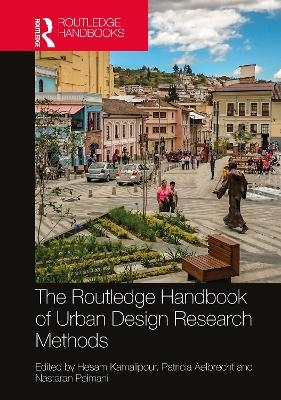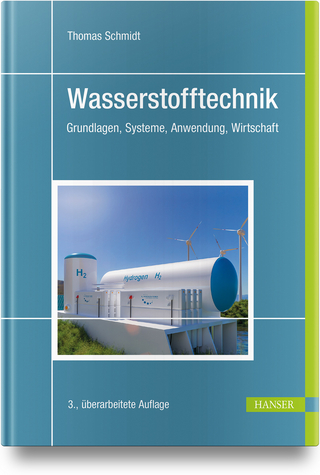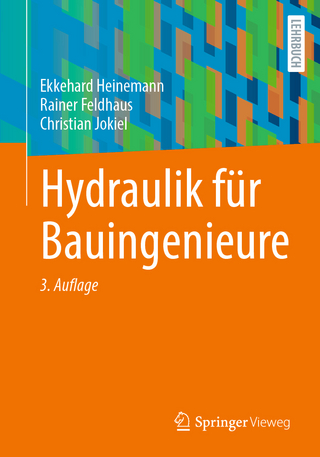
The Routledge Handbook of Urban Design Research Methods
Routledge (Verlag)
978-0-367-76805-8 (ISBN)
As an evolving and contested field, urban design has been made, unmade, and remade at the intersections of multiple disciplines and professions. It is now a decisive moment for urban design to reflect on its rigour and relevance. This handbook is an attempt to seize this moment for urban design to further develop its theoretical and methodological knowledge base and engage with the question of "what urban design can be" with a primary focus on its research.
This handbook includes contributions from both established and emerging scholars across the global North and global South to provide a more field-specific entry point by introducing a range of topics and lines of inquiry and discussing how they can be explored with a focus on the related research designs and methods. The specific aim, scope, and structure of this handbook are appealing to a range of audiences interested and/or involved in shaping places and public spaces.
What makes this book quite distinctive from conventional handbooks on research methods is the way it has been structured in relation to some key research topics and questions in the field of urban design regarding the issues of agency, affordance, place, informality, and performance. In addition to the introduction chapter, this handbook includes 80 contributors and 52 chapters organised into five parts. The commissioned chapters showcase a wide range of topics, research designs, and methods with references to relevant scholarly works on the related topics and methods.
Hesam Kamalipour is a Senior Lecturer in Urban Design, Co-Director of MA Urban Design, and Co-Founding Director of the Public Space Observatory Research Centre at Cardiff University. Patricia Aelbrecht is a Senior Lecturer in Urban Design and Intercultural Studies and Co-Founding Director of the Public Space Observatory Research Centre at Cardiff University. Nastaran Peimani is a Senior Lecturer in Urban Design, Leader of the Urbanism Research and Scholarship Group, and Co-Founding Director of the Public Space Observatory Research Centre at Cardiff University.
Introduction: urban design research
Hesam Kamalipour, Patricia Aelbrecht & Nastaran Peimani
PART 1: AGENCY
1.1. Researching urban design governance
Matthew Carmona
1.2. Dynamic multiplicity: contexts, perspectives, and timeframes
Ali Madanipour
1.3. Transect-based coding: a methodology
Emily Talen
1.4. Exploring the temporal dimension of urban design thinking
Olgu Çalışkan & Egbert Stolk
1.5. Commoning urban design: a research program
Stavros Stavrides
1.6. So the story goes: using narrative to explore social connections in urban space
Troy D. Glover & Rebecca F. Mayers
1.7. Bursting housing bubbles and the agency of urban design activism
Thomas Markussen
1.8. An anthropological way of working with urban design: examples from Africa
Claire Panetta & Suzanne Scheld
1.9. Exploring the agents involved in the urban design process for inclusive public spaces
Müge Akkar Ercan
1.10. Exploring financial agency in neoliberal urban design
Francisco Vergara-Perucich
PART 2: AFFORDANCE
2.1. Cognitive mapping as a research method: the childhood city
Tridib Banerjee
2.2. Discovering the playful affordances of urban spaces
Quentin Stevens
2.3. Exploring streets as places for social exchange
Vikas Mehta
2.4. Researching the applicability of body language methods in urban design
Patricia Aelbrecht
2.5. Exploring transit morphologies and forms of urbanity in urban design research
Nastaran Peimani
2.6. Putting people in place: deconstructing gendered imaginations through mental maps
Shilpa Ranade & Shilpa Phadke
2.7. Forms of negotiating space inside the Palestinian camp
Samar Maqusi
2.8. Exploring affective infrastructures: a feminist co-production method in urban design
Catalina Ortiz, Yael Padan, Belen Desmaison, Judith Mbabazi, Jane Rendell, Vanesa Castán Broto, Paul Isolo Mukwaya, & Teddy Kisembo
2.9. CPTED: research methods for crime prevention
Miguel Saraiva & Ana Verónica Neves
PART 3: PLACE
3.1. From place to assemblage: meanings and morphologies in urban design research
Kim Dovey
3.2. Phenomenological research methods and urban design
David Seamon
3.3. Researching place attachment
Maria Lewicka
3.4. Exploring the perception of urban environments for sound-driven placemaking
Tin Oberman, Francesco Aletta, & Jian Kang
3.5. Researching place in urban design
Gethin Davison & Ian Woodcock
3.6. Territoriology and the study of public place
Andrea Mubi Brighenti & Mattias Kärrholm
3.7. Creating character and identity in the rebuilt city: Investigating post-war Britain
Peter J. Larkham
3.8. Researching place history, memory and contested identities in urban design
Ross King
3.9. Urban design, consilience and placemaking
Mahyar Arefi & Amir Tayyebi
3.10. On the value of non-understanding in urban research: notes from explorations of significant non-translatables that make Tokyo - Tokyo
Darko Radović
3.11. Place writing, site drawing: researching graffiti as a critical spatial practice
Konstantinos Avramidis
PART 4: INFORMALITY
4.1. The spatial form and built environment of urban informality: researching informal housing in the Global North
Vinit Mukhija
4.2. Researching informal settlements in urban design: documenting urban villages in South China
Stefan Al
4.3. The challenges of researching place in informal settlements
Gabriela Quintana Vigiola
4.4. Research by the seat of your pants: the bicycle, the camera, and the sequential case method in studying urban informality
Gordon C. C. Douglas
4.5. An urban design framework of informal development stages: exploring self-build and growth in informal settlements
Jota Samper
4.6. Exploring informal urbanism
Hesam Kamalipour
4.7. Understanding how vendors move: mapping spatial informality using grounded theory
Kiran Keswani & Banashree Banerjee
4.8. Who authors counter-maps? Lessons from an ethnography of street vending
Francesca Piazzoni
4.9. Researching the spatial heterogeneity of Informal Street Vending
Lautaro Ojeda Ledesma
4.10. Assessing temporary appropriation, informality, and displacement
J. Antonio Lara-Hernandez & Abraham Echazarreta
PART 5: PERFORMANCE
5.1. Studying the qualities of urban squares
Jon Lang & Nancy Marshall
5.2. Designing the urban metaverse: visual analytics for urban design
Andy Hudson-Smith & Michael Batty
5.3. Post-occupancy evaluation
Mike Biddulph
5.4. Parameters for action: urban morphology as a framework for research in the built environment
Karl Kropf & Regina Lim
5.5. Modelling, mapping and measuring urban densities
Elek Pafka
5.6. Fit for all: exploring invitations and imaginaries in urban design research
Rachel Berney
5.7. Urban design and mapping technologies
Ole B. Jensen, Lea Holst Laursen & Signe Hald
5.8. Morpho: urban morphology, performance assessment and urban design
Vítor Oliveira
5.9. Green urban futures: researching the performance of urban design
Steffen Lehmann
5.10. Exploring transit-oriented urban design
Weichang Kong & Dorina Pojani
5.11. Form syntax 1.0: an analytical tool assisting urban design via the measuring of urban vitality
Yu Ye, Dan Qiang & Wei Zeng
5.12. Examining the role of the urban built environment in supporting disaster risk reduction
Jorge León & Magdalena Vicuña
| Erscheinungsdatum | 26.08.2023 |
|---|---|
| Zusatzinfo | 27 Tables, black and white; 14 Line drawings, black and white; 115 Halftones, black and white; 129 Illustrations, black and white |
| Verlagsort | London |
| Sprache | englisch |
| Maße | 174 x 246 mm |
| Gewicht | 1400 g |
| Themenwelt | Naturwissenschaften ► Biologie ► Ökologie / Naturschutz |
| Naturwissenschaften ► Geowissenschaften ► Geografie / Kartografie | |
| Technik ► Architektur | |
| ISBN-10 | 0-367-76805-4 / 0367768054 |
| ISBN-13 | 978-0-367-76805-8 / 9780367768058 |
| Zustand | Neuware |
| Informationen gemäß Produktsicherheitsverordnung (GPSR) | |
| Haben Sie eine Frage zum Produkt? |
aus dem Bereich


